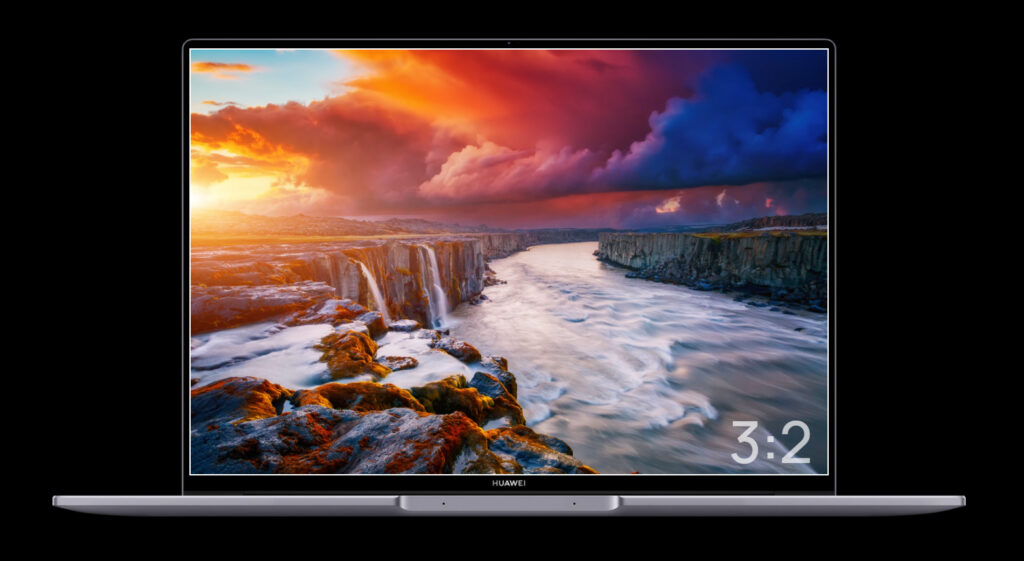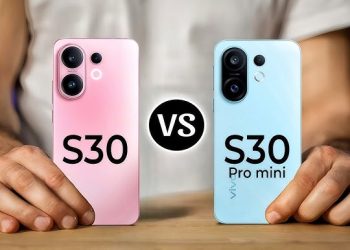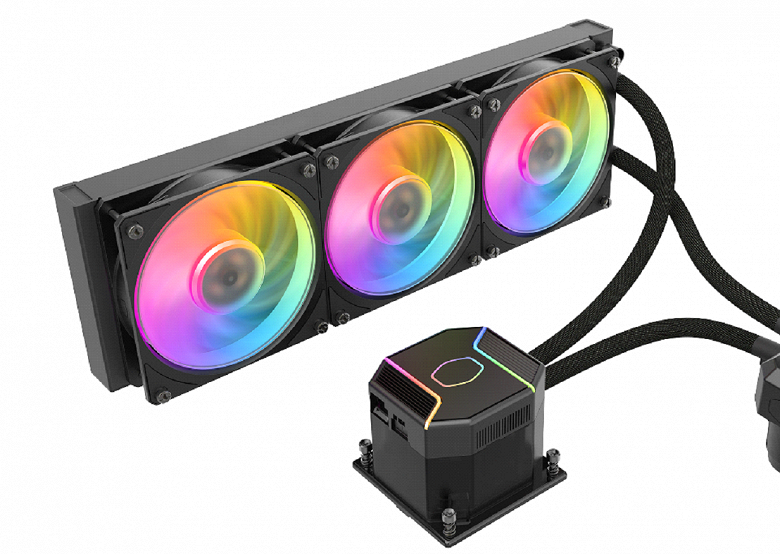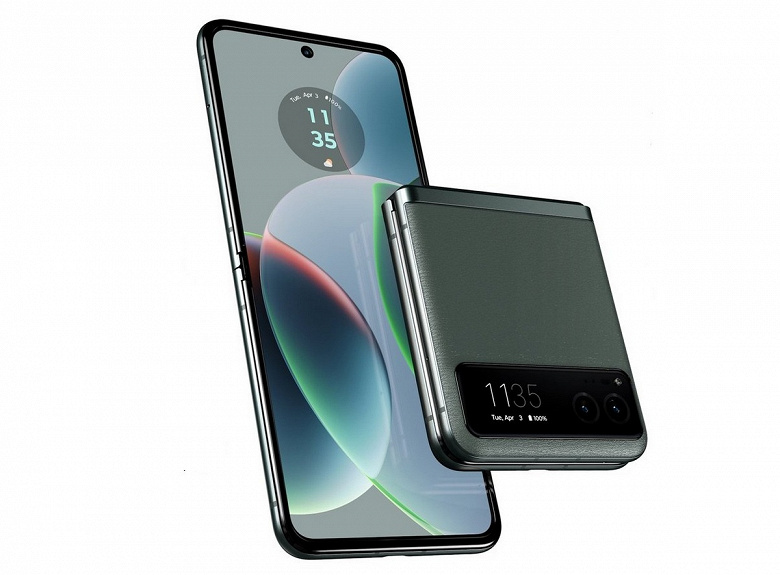Following the MateBook X Pro ultrabook, we offer you to get acquainted with another Huawei model – the MateBook 16s (CREF-X) laptop . Its predecessor, the MateBook 16 (Crem-WFD9) , impressed us with the high performance of the Ryzen 7 5800 processor and the quality of the screen. Preparing the hero of this review, the company changed the platform from “red” to “blue”, and now the MateBook 16s uses mobile processors based on the Alder Lake core, and specifically in our case it is the Core i9-12900H. There are a few other positive changes that should ultimately make the next MateBook more attractive and competitive. We will tell about all the features of the laptop, its advantages and disadvantages in today’s material.

Equipment
The package is exactly the same as its predecessor. Among the accessories – only a power supply with a cable and a quick start guide with a “warranty”.
The laptop is manufactured in China and comes with a one-year warranty. In Russia, in the top configuration, it costs 120 thousand rubles.
Ultrabook configuration
| Huawei MateBook 16s (CREF-X) | ||
|---|---|---|
| Processor | Core i9-12900H (6 P-cores/12 threads up to 5.0 GHz + 8 E-cores up to 3.8 GHz, 24 MB L3 cache, TDP 35-115 W); i7-12700H version available |
|
| Chipset | Alder Lake-P PCH | |
| RAM | 16 GB LPDDR5-4800 (soldered on the board), dual-channel mode, timings 52-44-44-104 CR1 | |
| Video subsystem | Iris Xe integrated graphics, 1.45 GHz | |
| Screen | 16″ IPS display with 2520×1680 pixels (3:2) resolution, 60Hz, 300nits advertised brightness, 1500:1 contrast ratio, 100% sRGB color gamut, oleophobic mirror surface, TÜV Rheinland Low Blue Light certified and TÜV Rheinland Flicker Free | |
| Sound subsystem | 2 stereo speakers | |
| Storage device | 1×1TB SSD PCIe-8 (YM00D216), M.2 2280, NVMe, PCIe 3.0 x4 | |
| Cartographer | No | |
| Network interfaces | wired network | No |
| Wireless network | Wi-Fi 6E (AX211D2W, 802.11ax, 2×2 MIMO, 2.4/5/6 GHz, 160 MHz) | |
| Bluetooth | Bluetooth 5.2 | |
| Interfaces and ports | USB | 1×Thunderbolt 4/USB-C 3.2 Gen2 , supports data transfer (max. 40Gbps), charging and DisplayPort; 1×USB-C 3.2 Gen1, support data transfer, charging and DisplayPort; 2×USB-A 3.2 Gen1 |
| Video outputs | 1×HDMI 1×Thunderbolt 4/DisplayPort (USB-С) 1×DisplayPort (USB-С) |
|
| RJ-45 | No | |
| Audio jack | universal minijack for microphone, headphones and headset | |
| Input Devices | Keyboard | membrane without digital block, two-level key illumination (switchable), key travel 1.5 mm |
| Touch | 140x90mm with multi-touch support | |
| IP telephony | Webcam | 1080p IR built into the top of the screen bezel; “Virtual Background”, “Auto Center” and “Change Gaze” functions |
| Microphone | 2 microphones (with noise reduction system) | |
| Battery | lithium polymer, 84 Wh (7330 mAh) | |
| Power adapter | HW-200675ED1, up to 135W (20.0V, 6.75A), weight with cables 474g, total cable length 298cm; younger models are equipped with a 90 W adapter |
|
| Dimensions | 352×256×23mm (front thickness 18.5mm) | |
| Weight without power adapter: declared/measured | 1990 / 2016 | |
| Available ultrabook case colors | “Space Gray” | |
| Other Features | aluminium case; built-in Huawei Share (NFC) sensor; productive mode of operation; power button with built-in fingerprint scanner; Huawei PC Manager, Display Manager (Eye Comfort Mode) |
|
| Operating system | Windows 11 Home | |
| Official price | 120 thousand rubles 110 thousand rubles for the version with i7-12700H and 1 TB SSD |
|
Appearance and ergonomics of the case
MateBook 16s is available in only one color – Space Gray, which can already be called branded for Huawei products. It must be remembered that this is not a premium model, but an ordinary “workhorse”, so such a non-staining color suits it perfectly.
Speaking strictly about the design, in comparison with , it has undergone one meager change. You won’t be able to detect it right away, since we are talking about a webcam that has migrated from the function row button to the top of the display frame.
Nothing else has changed at all, but it can hardly be said that the laptop has become worse and less interesting from this. The lid and worktop of the MateBook 16s are still sandblasted aluminum.
The dimensions of the device are the same and are 352 × 256 × 23 mm, and the weight of the laptop is about two kilograms, which is somewhat large for a non-gaming even 16-inch model, but here there is a metal case and a reinforced cooler.
In addition to dense rubber legs on the plastic base of the ultrabook, we will single out a relatively large ventilation grill for air to flow to the cooling system fans.
Towards the front end, the laptop body narrows, so it seems that it is thinner than it actually is. There is also a notch for easy finger grip of the top panel and two microphones.
The number and design type of laptop ports have not changed: on the left are two USB 3.2 Type-C, HDMI video output and a universal 3.5 mm headphone/microphone jack, and on the right are two USB 3.2 Gen1 Type-A.
However, one of the two USB Type-C on the MateBook 16s is a Thunderbolt 4 interface port with a bandwidth of up to 40 Gb / s, support for reverse charging and video output (DisplayPort).
A set of interfaces that is quite exhaustive in terms of demand, as it seems to us. However, with such a thickness of the case, it would be possible to add an RJ-45 cable network connector.
The lid of the laptop can be easily opened with one hand without holding the base, and the opening angle is 150 degrees.
Although Huawei does not position the MateBook 16s as a premium model, the build quality of the laptop is impeccable, and the materials used are both tactile and visually pleasing.
Input Devices
The keyboard in Huawei MateBook 16s was not changed at all, it does not have a number block and a column with Page Up and Page Down keys, but the alphanumeric keys are large enough to type comfortably.
The key travel is 1.5 mm. Pressing is soft and quiet, but the moment of operation is felt well, so the number of errors when typing is minimal.
Both layouts are printed in a well-readable white font in opposite corners of the keys, the Russian layout got a slightly smaller font size than the English one.
The keyboard still has a two-level backlight, but even at the maximum level and in complete darkness, it can hardly be called bright.
The touchpad is comfortable with its dimensions – 140×90 mm, as well as a smooth surface with a glass coating and optimal sensitivity.
The webcam has now been moved into the frame of the screen and put on a higher quality sensor with a resolution of 1080p, an 88-degree field of view and an intelligent tracking system, support for virtual background and eye contact functions.
The fingerprint scanner is built into the button located in the far right corner of the operating panel.
Huawei Share proprietary technology has now been supplemented with the “Superdevice” function, thanks to which you can literally pair your laptop with smartphones, tablets, monitors, smart screens and other Huawei devices with just a couple of clicks.
Thus, you can not only manage files on a smartphone or tablet, but also edit them and then save them to the memory of mobile devices. You can also easily answer voice or video calls.
Screen
Glass covers the entire surface of the laptop screen, so marketers have every reason to call it frameless. However, the width of the side bezels here is 6mm and the bezel top is 8mm. The Huawei MateBook 16s (CREF-X) laptop uses a 16.0-inch IPS panel with a resolution of 2520×1680 ( edid-decode report ).
The front surface of the screen is made of scratch-resistant glass plate. The screen is mirror-smooth on the outside. There is a special oleophobic (grease-repellent) coating on the outer surface of the screen, which is noticeably better in efficiency than the screen of the Google Nexus 7 (2013) tablet (hereinafter simply Nexus 7), so fingerprints are removed much easier and appear at a slower rate than in the case of ordinary glass. The screen is touch, the sensor recognizes up to 10 touches at the same time. Judging by the brightness of the reflected objects, the anti-glare properties of the screen are no worse than those of the Nexus 7. For clarity, here is a photo in which a white surface is reflected on the screens of both devices (it’s easy to figure out where what):
The screen of the laptop is just as dark (brightness from the photographs is 99 for both), which means that the screen does not have a special anti-glare coating. We did not find any significant doubling of the objects reflected in the screen, that is, there is no air gap in the layers of the screen.
When powered by mains or battery and with manual brightness control (there is no automatic adjustment by light sensor), its maximum value was 330 cd / m² (in the center of the screen on a white background). If you avoid direct sunlight, then this value allows you to somehow use the laptop on the street, even on a sunny summer day.
To evaluate the readability of the screen outdoors, we use the following criteria obtained from testing screens in real conditions:
| Maximum brightness, cd/m² | Conditions | Readability score |
|---|---|---|
| Matte, semi-matte and glossy screens without anti-reflective coating | ||
| 150 | Direct sunlight (more than 20,000 lux) | unreadable |
| Light shadow (approximately 10,000 lux) | barely readable | |
| Light shade and light clouds (no more than 7500 lux) | work uncomfortable | |
| 300 | Direct sunlight (more than 20,000 lux) | barely readable |
| Light shadow (approximately 10,000 lux) | work uncomfortable | |
| Light shade and light clouds (no more than 7500 lux) | work comfortably | |
| 450 | Direct sunlight (more than 20,000 lux) | work uncomfortable |
| Light shadow (approximately 10,000 lux) | work comfortably | |
| Light shade and light clouds (no more than 7500 lux) | work comfortably | |
These criteria are very conditional and may be revised as data accumulate. Note that there may be some improvement in readability if the matrix has some kind of transreflective properties (part of the light is reflected from the substrate, and the image can be seen in the light even with the backlight turned off). Also, glossy matrices, even in direct sunlight, can sometimes be rotated so that they reflect something quite dark and uniform (on a clear day, for example, the sky), which will improve readability, while matte matrices need to be blocked from Sveta. In rooms with bright artificial light (about 500 lux), you can work more or less comfortably even with a maximum screen brightness of 50 cd / m² and below, that is, in these conditions, maximum brightness is not an important value.
Let’s return to the screen of the tested laptop. If the brightness setting is 0%, then the brightness is reduced to 5 cd/m². Thus, in complete darkness, the screen brightness can be lowered to a comfortable level.
Let’s summarize. The screen of this laptop has a high enough maximum brightness (330 cd/m²) to allow you to use the device outdoors on a bright day, shielded from direct sunlight. In complete darkness, the brightness can be reduced to a comfortable level (up to 5 cd / m²). The advantages of the screen include high contrast (1400:1), acceptable color balance and sRGB color gamut. The disadvantages are the low stability of black to the deviation of the gaze from the perpendicular to the screen plane. In general, the screen quality is high.
Disassembly capabilities and components
By and large, up to this point in Huawei MateBook 16s there were no major changes compared to its predecessor. But this and the following sections will fully convince you that the release of version 16s was worth it, since inside the laptop case there is now a hardware platform with an Alder Lake processor family.
The laptop motherboard with the laconic name CREF-XX-PCB is based on the Alder Lake-P PCH chipset. Her BIOS version is 1.18. No automatic updates were found.
Our version of Huawei MateBook 16s has a Coge i9-12900H processor, which has 6 productive cores (12 threads) with automatic overclocking up to 5 GHz, as well as 8 energy-efficient cores with overclocking up to 3.8 GHz.
The amount of L3 cache in the processor is 24 MB. Processor power limits range from 35 to 115 watts, although HWinfo64 shows the processor has an upper limit of 116.25 watts.
The temperature at which the throttling mode will be activated is 100 ° C, but in practice this limit is slightly lower. Recall that you can also purchase Huawei MateBook 16s with a Coge i7-12700H processor.
As RAM, Huawei MateBook 16s uses 16 GB LPDDR5 with an effective frequency of 4.8 GHz and basic timings of 52-44-44-104 CR1.
The chips are soldered to the motherboard, so there is no way to increase the volume, and there are no options for the MateBook 16s with 32 or 64 GB of memory yet. The memory bandwidth is atypically high for laptops, but the latency leaves much to be desired.
However, this is not a gaming laptop, so there is nothing critical in such high latency.
There is no discrete graphics in the laptop, so the only possible option is the Iris Xe core built into the central processor with 96 execution units and a frequency in 3D mode up to 1.45 GHz. Its characteristics and test results are given below.
The Huawei MateBook 16s has only one M.2 storage slot, which has a 1TB PCIe-8 SSD without a heat spreader.
The Core i7-12700H version of the MateBook 16s also comes with a 1TB SSD.
SSD performance is average by today’s standards, but more than adequate for the tasks the MateBook 16s is capable of handling. We will show the test results in two screenshots:
As you can see, in the offline mode of the laptop, the performance of the SSD is lower than when working from the mains. The difference is about 25%-30%. Compared to the performance of a regular MateBook 16 drive, there is almost no difference.
SSD temperatures also differ depending on the mode of operation of the laptop. We will demonstrate this difference with the stress test results of an AIDA64 drive.
In the first case, the SSD heated up to 50-52 ° C, and in the second – up to 45 degrees. In other words, there is nothing to worry about, regardless of whether the laptop is running offline or on mains power.
Unlike the MateBook 16, which is equipped with a Realtek RTL8822CE network controller, the 2022 model received a more modern Wi-Fi 6E AX211D2W network controller with support for Bluetooth 5.2 and a bandwidth of up to 2.4 Gb / s.
Supported frequencies are 2.4, 5 and 6 GHz, as well as 2×2 MIMO mode and security protocols up to and including WPA3. By the way, the network controller is soldered on the board and it will not work to change it.
The sound system is still implemented by two stereo speakers built into the sides of the keyboard.
Supported proprietary sound enhancement systems Smart Optimization, Ultra-Bass and Sound Turbo.
The loudness of the built-in loudspeakers was measured while playing an audio file with pink noise. The maximum volume was 78.6 dBA, so among the laptops tested at the time of this writing (maximum 83 dBA, median 74.6 dBA), this laptop is noticeably louder than average in volume.
Cooling system and work under load
Since the Huawei MateBook 16s now has a more powerful hardware platform, the developers needed to improve the efficiency of the cooling system. This was done by replacing
It also looks like the fan impellers with Shark Fin blades have been enlarged. But fundamentally, the operation of the cooling system has not changed: cold air is sucked in from below and in the center of the rear end, and the heated air is thrown back through the copper fins of the radiators.
As before, Huawei PC Manager provides two laptop modes: Performance and Balance, which can be switched with the Fn + P key combination. It is not very convenient that every time you boot your laptop you have to activate the performance mode, since the balanced one is set by default.
We tested both modes of the Huawei MateBook 16s on mains power using the powerMax stress test with AVX instructions for the processor, and monitoring was carried out using the customized HWinfo64 utility. The results are shown in the screenshots.
The performance of the laptop in productive and balanced modes is different, but not critical. At first glance, it seems that there are no differences at all, but this is not entirely true. It is clear that throttling is fixed in both cases, but in the productive mode, the P-core frequency often stays at 3.2 GHz, although it averages 2.3-2.4 GHz, but in balanced mode it is 0.2-0 .3 GHz below. The power consumption range of the processor is approximately the same: from 30 to 80 watts. The CPU temperature after stabilization is 89°C in Performance mode and 73°C in Balance mode.
Now let’s see how the laptop works on battery power, when only Balance mode is available.
It can be immediately noted that the monitoring graphs are more uniform, the frequency / temperature / power consumption fluctuations are not as strong as when powered from the mains. P-core frequencies stabilize at 1.8-1.9 GHz with power consumption from 25 to 48 watts and a temperature of 76 ° C. The noise level in this case is noticeably lower, but even when working from the mains, the laptop is noisy only in stress tests, and in normal work, even with resource-intensive applications, acoustic comfort is maintained.
Noise level and heating
We measure the noise level in a special soundproof and semi-silenced chamber. At the same time, the sound level meter microphone is located relative to the laptop in such a way as to imitate the typical position of the user’s head: the screen is tilted back by 45 degrees (or to the maximum, if the screen does not recline by 45 degrees), the microphone axis coincides with the normal emanating from the center of the screen, the front end of the microphone is located at a distance of 50 cm from the plane of the screen, the microphone is directed at the screen. The load is created using the, the screen brightness is set to maximum, the room temperature is maintained at 24 degrees, but the laptop is not specially ventilated, so the air temperature in the immediate vicinity may be higher. To estimate the real consumption, we also give (for some modes) the consumption from the network. The battery is pre-charged to 100%. In the settings of the proprietary utility, the Performance or Balanced profile is selected. The supplied power supply is used:
| Load scenario | Noise level, dBA | Subjective assessment | Consumption from the network, W |
|---|---|---|---|
| Balance | |||
| Inaction | background (16.0) | conditionally silent | 17 |
| Maximum CPU load | 29,8 | quiet | 68 (maximum 119) |
| Maximum load on the video card | 25,0 | very quiet | 52 (maximum 79) |
| Maximum load on the processor and video card | 29,8 | quiet | 71 (maximum 119) |
| Performance | |||
| Maximum load on the processor and video card | 42,2 | very noisy | 94 (maximum 119) |
If the laptop is not loaded at all, then its cooling system in the case of the Balance profile can work in passive mode. In this profile, even under heavy load, the noise from the cooling system is very moderate. Enabling the Performance profile increases both the performance of the same name and the noise level. In any case, the nature of the noise is even and does not cause irritation. The spectrogram obtained for the maximum fan speed is quite smooth, and there are no pronounced peaks in the frequency range where sounds can cause particular irritation:
For a subjective assessment of the noise level, the following scale is applicable:
| Noise level, dBA | Subjective assessment |
|---|---|
| Less than 20 | conditionally silent |
| 20—25 | very quiet |
| 25—30 | quiet |
| 30—35 | clearly audible |
| 35—40 | noisy |
| 40—45 | very noisy |
| 45—50 | loudly |
| Above 50 | very loud |
Below 20 dBA, the computer is conditionally silent; from 20 to 25 dBA, a laptop can be called very quiet; 35 dBA noise is clearly audible, 35 to 40 dBA noise exceeds the comfortable level for long-term work, 40 to 45 dBA the laptop is very noisy and needs to be masked by background music, for example, 45 to 50 dBA noise level is very uncomfortable, and 50 dBA and above, the noise is so loud that headphones must be used. The scale, of course, is very conditional and does not take into account the individual characteristics of the user and the nature of the sound.
Below are thermal images obtained after long-term operation of the laptop under maximum load on the CPU and GPU (Performance mode):
Under maximum load, working with the keyboard is comfortable, since the places under the wrists practically do not heat up. A laptop on your lap is no big deal, but your knees block the intake vents, which adds to the noise and can cause overheating. The power supply gets very hot, so you need to make sure that it is not covered with anything during long-term operation with high performance.
Performance
We tested the performance of the CPU, RAM and storage of the Huawei MateBook 16s ultrabook in real applications in accordance with the methodology and application set of our test package iXBT Application Benchmark 2020 . For comparison, the table includes a reference system based on a 6-core Coge i5-9600K processor, as well as the results of a Huawei MateBook 16 with a Ryzen 7 5800H processor and a recently tested Huawei MateBook X Pro 2022 with a Coge i7-1260P processor. All laptops were tested in maximum performance mode on mains power. The results are shown in the table.
| Test | Reference result (Soge i5-9600K) |
Huawei MateBook 16s CREF-X (Соге i9-12900H) |
Huawei MateBook X Pro 2022 MRGF-X (Соге i7-1260P) |
Huawei MateBook 16 Crem-WFD9 (Ryzen 7 5800H) |
|---|---|---|---|---|
| Video conversion, points | 100,0 | 139,1 | 100,9 | 135,7 |
| MediaCoder x64 0.8.57, c | 132,03 | 88,42 | 129,12 | 92,65 |
| HandBrake 1.2.2, c | 157,39 | 108,73 | 166,97 | 117,67 |
| VidCoder 4.36, c | 385,89 | 309,85 | 362,27 | 294,26 |
| Rendering points | 100,0 | 174,6 | 123,5 | 154,9 |
| POV-Ray 3.7, с | 98,91 | 51,45 | 81,45 | 65,41 |
| Cinebench R20, p | 122,16 | 62,40 | 99,44 | 77,65 |
| Vlender 2.79, p | 152,42 | 92,64 | 134,85 | 107,44 |
| Adobe Photoshop CS 2019 (3D rendering), c | 150,29 | 100,23 | 109,09 | 88,10 |
| Creation of video content, points | 100,0 | 151,2 | 126,3 | 118,5 |
| Adobe Premiere Pro CC 2019 v13.01.13, c | 298,90 | — | — | 253,20 |
| Magix Vegas Pro 16.0, c | 363,50 | 202,00 | 252,00 | 402,00 |
| Magix Movie Edit Pro 2019 Premium v.18.03.261, c | 413,34 | — | — | 312,79 |
| Adobe After Effects CC 2019 v 16.0.1, с | 468,67 | 293,00 | 347,00 | 314,00 |
| Photodex ProShow Producer 9.0.3782, c | 191,12 | 159,00 | 185,00 | 172,00 |
| Digital photo processing, points | 100,0 | 161,2 | 138,6 | 96,8 |
| Adobe Photoshop CC 2019, s | 864,47 | 640,96 | 621,53 | 747,68 |
| Adobe Photoshop Lightroom Classic СС 2019 v16.0.1, c | 138,51 | 59,86 | 78,23 | 155,46 |
| Phase One Capture One Pro 12.0, c | 254,18 | 189,46 | 234,92 | 289,01 |
| Text recognition, points | 100,0 | 175,1 | 121,5 | 178,7 |
| Abbyy FineReader 14 Enterprise, c | 491,96 | 280,94 | 404,83 | 275,35 |
| Archiving, points | 100,0 | 180,5 | 143,5 | 120,7 |
| WinRAR 5.71 (64-bit), c | 472,34 | 263,95 | 320,58 | 391,75 |
| 7-Zip 19, c | 389,33 | 213,96 | 278,57 | 322,01 |
| Scientific calculations, points | 100,0 | 149,4 | 106,5 | 130,0 |
| LAMMPS 64-bit, c | 151,52 | 98,82 | 123,47 | 102,29 |
| NAMD 2.11, p | 167,42 | 109,60 | 169,69 | 144,08 |
| Mathworks Matlab R2018b, c | 71,11 | 44,46 | 68,08 | 53,65 |
| Dassault SolidWorks Premium Edition 2018 SP05 with Flow Simulation 2018, c | 130,00 | 102,00 | 128,00 | 104,00 |
| Integral result without accumulator, points | 100,0 | 160,9 | 122,1 | 131,4 |
| WinRAR 5.71 (Store), c | 78,00 | 25,14 | 24,85 | 24,22 |
| Data copying speed, s | 42,62 | 10,30 | 11,05 | 10,09 |
| Accumulator integral result, points | 100,0 | 358,2 | 347,9 | 354,7 |
| Integral performance result, points | 100,0 | 204,6 | 167,2 | 177,0 |
Objectively, it was impossible to say that the performance of the previous Huawei MateBook 16 was lacking somewhere (we don’t take games into account). However, the MateBook 16s with the Coge i9-12900H mobile processor leads it by 22.5% in the integrated result without taking into account the drive , and the Huawei MateBook X Pro 2022 with the Coge i7-1260P processor immediately lags behind by 31.8%. The advantage was recorded in almost all groups of tests, with the exception of text recognition and video transcoding, and it looks especially impressive in graphic editors and archivers.
In 3D benchmarks, the Iris Xe graphics core is noticeably ahead of the integrated graphics in the Ryzen 7 5800H (by 70% or more in some tests).
Battery life
The kit of the most “pumped” Huawei MateBook 16s includes a 135-watt power adapter (20.0 V, 6.75 A), but the model with the i7-12700H processor is equipped with a 90-watt power adapter.
It is stated that such a power adapter is able to replenish the battery charge from 0 to 50% in 30 minutes. You can charge the laptop through any of the two USB Type-C ports; during the charging process, a white LED lights up on the end of the case.
Both USB ports can also provide power, which is implemented by a pair of Realtek 5452E controllers with Power Delivery technology.
The laptop battery capacity has not changed compared to the previous model and is 84 Wh (7330 mAh).
However, according to diagnostic utilities, when fully charged, the battery capacity can reach 89.3 Wh, which was not recorded in a regular MateBook 16 .
We performed four full charge cycles of the Huawei MateBook 16s laptop battery from 3% to 99%, and the average charge time was 2 hours and 11 minutes. At the same time, the battery really gains the first 50% in no more than 35 minutes.
Testing the autonomy of the laptop was carried out according to our methodology using the iXBT Battery Benchmark v1.0 script , and additionally in the 3DMark benchmark using the Fire Strike looped test. Screen brightness was set to 100 cd/m² (in this case, about 33% in this case), so laptops with relatively dim screens don’t benefit.
| Load scenario | Working hours |
|---|---|
| Working with text (keyboard backlight at maximum) | 11 h. 55 min. |
| Video viewing | 8 h. 41 min. |
| 3DMark Fire Strike (Cyclic) | 1 h. 58 min. |
Again, when compared with the previous model, then, by and large, the Huawei MateBook 16s did not increase autonomy. But the results were not lower either – the level is about the same. On the one hand, there is no progress in this component of the laptop, and this is not very cool. On the other hand, let’s not forget about the increased performance, so the not reduced battery life of the laptop is a plus for the MateBook 16s.
conclusions
We decided to list the advantages that the model with a small letter “s” has over the “regular” MateBook 16 (CREM-WFD9):
- more powerful Alder Lake processor coupled with LPDDR5-4800 RAM (more than 22% performance increase);
- the webcam is now with a resolution of 1080p and moved from the button to the frame above the screen, and at the program level it was added the ability to replace the background, auto-center and change the direction of view;
- faster Wi-Fi 6E with up to 2.4 Gbps;
- One USB Type-C port now supports Thunderbolt 4 (up to 40 Gb/s);
- a powerful power adapter is included (up to 135 W for the older model and up to 90 W for the other two);
- support for the universal integration function “Superdevice”.
The laptops do not differ at all in design, keyboard, touchpad, sound, and even the 2.5K screen showed almost the same characteristics. The cost also remained at the same level: 110-120 thousand rubles. In the bottom line, Huawei has turned out to be another “workhorse” (this time a little more sharpened for remote work with its endless video calls) with an even better combination of performance and cost, which will definitely find its customers.









